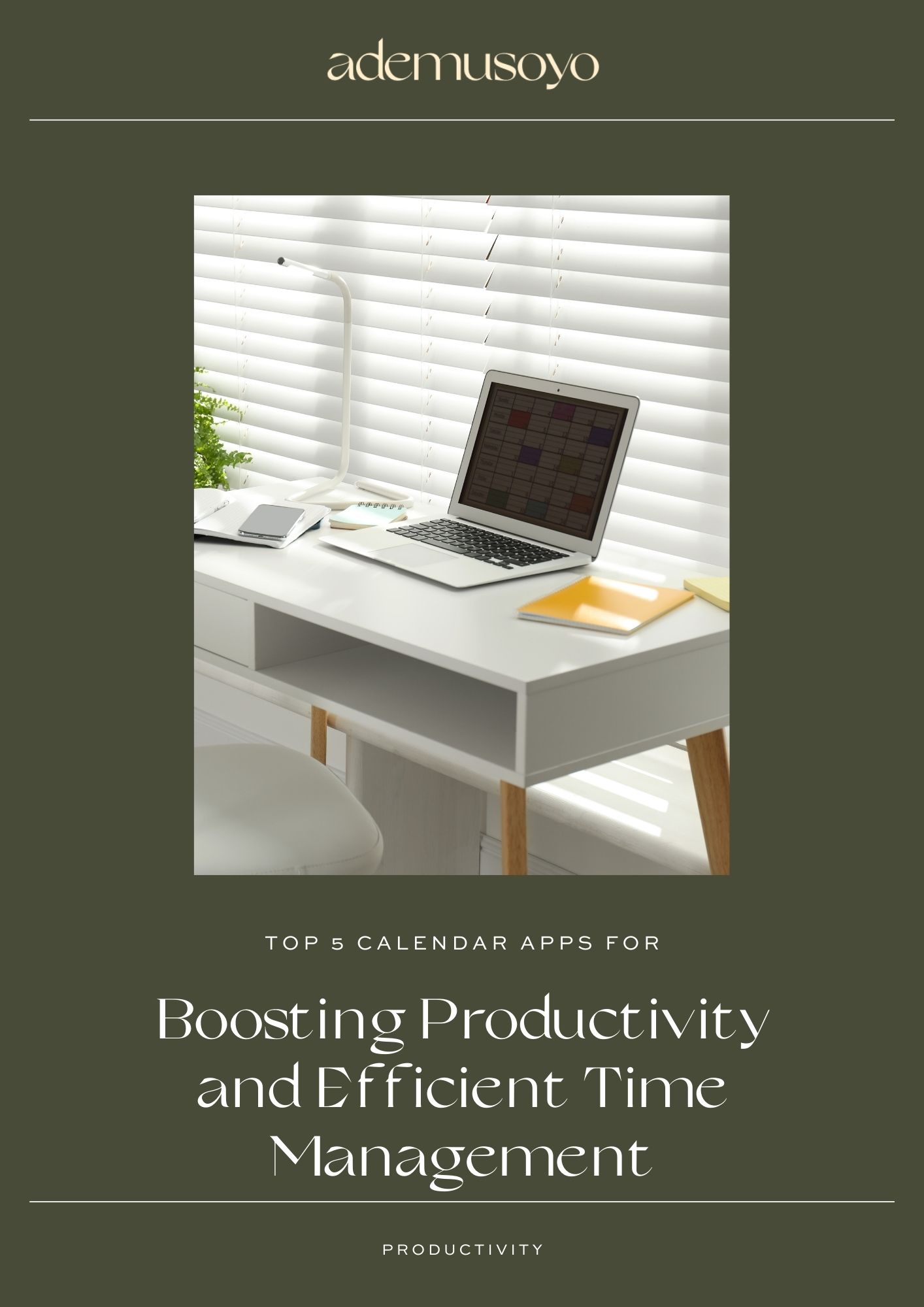Do you ever look at your schedule and find an hour of time where you don’t have any meetings and you think to yourself “Great, now I can get my work done during this time” but when you sit down to actually get the work done you don’t even know how to get started? Do you ever find yourself getting fatigued in the middle of your work because you’ve been so focused and you didn’t give yourself a break? I used to find myself feeling scattered and finding it hard to focus until I discovered the Pomodoro Technique.
The Pomodoro Technique is one of my favorite time management strategies developed by Francesco Cirillo in the late 1980s. When I use this method, I find myself being able to work more efficiently while also staying focused. In this blog post, we’re going to dive deeper into the Pomodoro technique by discussing how to use it as well as the benefits and drawbacks.
What is the Pomodoro technique?
The Pomodoro Technique is a popular time management strategy that helps you increase productivity and focus. To master the Pomodoro technique, start by dividing your work into 25-minute intervals, each with a short break. After about three to four rounds of 25 min intervals, you take a longer break. The technique is named after the tomato-shaped kitchen timer used by its creator, Francesco Cirillo, when he first developed the method in the late 1980s.
The Pomodoro Technique has significantly improved my efficiency and focus. Whether in my career, business, or daily tasks, it’s been a valuable tool. For those facing procrastination or distractions, this technique’s short work intervals and breaks are highly beneficial. Later in this blog post, we’ll explore numerous apps and tools to effectively utilize this method.
How to use the Pomodoro technique
This versatile technique can be applied to various tasks, whether they are short or require more time. It ensures regular breaks, helping you maintain stamina and accomplish longer tasks effectively. By using this technique, you can strike a balance between productivity and relaxation. To make the most of it, plan your tasks ahead and commit to completing them.

6 Major Steps of The Pomodoro Technique
The Pomodoro Technique is one of the simplest time management strategies to get started with today! Here’s how you get started:
Step 1: Choose a task to be accomplished
To begin using the Pomodoro technique, select a specific task that can be reasonably completed within a three-hour timeframe. Prioritize it by reviewing your to-do list, taking into account factors like energy levels, time of day, and external deadlines. Choosing a task aligned with your goals and values will provide the necessary motivation for completion.
Step 2: Set a timer for 25 mins
Setting a timer for 25 minutes is essential in the Pomodoro Technique, enhancing focus and productivity. Work on a task uninterrupted for 25 minutes, followed by a short break to recharge before the next Pomodoro.
Experiment with timer settings to find what suits you best. Personally, I prefer 27 minutes, as the extra 2 minutes provide a better sense of accomplishment before the break. If you find it easier to stay focused, try 20 minutes. However, avoid exceeding 30 minutes as it may lead to fatigue towards the end.
During the Pomodoro interval, maintain absolute focus on the chosen task until the timer rings. Eliminate all distractions, such as your phone, TV, or extra computer tabs. This triggers your brain to concentrate better, preventing sidetracking by other tasks or interruptions.
Step 3: Work on the task until the timer rings
Step 3 is where the work really begins. Now that you’ve set your intention for the Pomodoro and you’ve set the timer, you need to actually get to work on the task for that time. To make the most out of your time, eliminate all distractions and focus on the task at hand. This means turning off your phone, closing unnecessary tabs and apps, and avoiding social media and other distractions. If you find yourself getting distracted or losing focus, don’t get discouraged. Take a deep breath and refocus your attention on the task.
Step 4: Take a short break (5-10 mins)
Once the timer rings, take a short break to recharge. This break can be between 5-10 minutes, and it’s a great opportunity to stretch, grab a snack, or do something else that helps you relax. The important thing is that you do not think about any of the work ahead while you’re taking a break. This will help your brain properly recharge. Then, start the next Pomodoro and continue working on the task until it’s complete.
Step 5: Every 4 Pomodoros, take a longer break (15-30 Mins)
After you’ve done 4 Pomodoros, reward yourself with a longer break for 15-30 minutes. During this break, you can engage in a variety of activities to refresh your mind and get ready for the next session. Some things you could do could be, take a short walk outside, listen to music, read a book, or even meditate. This will give your brain a chance to relax and recharge, which will help you maintain focus and productivity throughout the day as well as reduce your stress levels. Make sure you take advantage of this opportunity to give yourself a mental break and improve your overall performance.
Step 6: Repeat the process until the task is complete
Once you’ve finished a round of Pomodoros, repeat steps 1-5 until the task is complete. Make sure that you keep the same break intervals but consider working on some lighter tasks that could be done in less than one interval. Break your big tasks into smaller tasks to help eliminate overwhelm so you can stay motivated to get things done.
When you follow these steps, you’re able to break down their work into manageable intervals, allowing them to focus on one task at a time while also taking regular breaks to avoid burnout. This helps you get more done within a reasonable amount of time.

Does the Pomodoro Technique actually work?
Being productive and managing your time is a very personal process. Some productivity hacks that a lot of productivity experts swear by may not work for everyone. That being said, I find that the Pomodoro Technique is a method that can work for everyone in their own unique way. The key components of the Pomodoro technique are: setting a timer, and taking a break. How long you set your timer and break intervals are really dependent on you. The Pomodoro Technique is a tool that I firmly believe can help you focus which can increase your productivity because of the prioritization of taking regular breaks as well as breaking down work into manageable intervals. It’s an absolute game-changer.
The Pomodoro Technique for ADHD
In particular, the Pomodoro Technique has been found to be helpful for individuals with ADHD. It provides structure and a clear plan for how to tackle tasks, which can be especially beneficial for those with difficulty with organization and time management. Additionally, regular breaks can help to reduce restlessness and improve focus. However, it’s important to note that the Pomodoro Technique is just one tool in managing ADHD symptoms and should be used in conjunction with other strategies.
Why is the Pomodoro Technique effective?
The Pomodoro Technique is effective for several reasons. First, it helps break down tasks into manageable intervals which makes your tasks less daunting and can help eliminate procrastination. When you’re working on tasks in short bursts, you can maintain focus and avoid getting sidetracked by distractions. Secondly, the Pomodoro Technique emphasizes the importance of taking regular breaks, which can help reduce fatigue and improve overall productivity.
As I mentioned previously, the Pomodoro Technique is incredibly flexible and adaptable. You can adjust your work intervals and break times to suit your individual needs and work style. This makes it a practical tool for a variety of tasks and work settings. Overall, the Pomodoro Technique’s emphasis on manageable intervals, regular breaks, and adaptability makes it an effective tool for improving productivity, reducing stress, and achieving better work-life balance.
Benefits of the Pomodoro Technique
Here are some additional benefits of the Pomodoro Technique:
- Increased creativity: Taking regular breaks can help to clear your mind and improve creativity. When you return to your work after a break, you may find that you have a fresh perspective and new ideas.
- Better work-life balance: By breaking your work into intervals, you can better manage your time and avoid working long hours without breaks. This can help you achieve a better work-life balance and prevent burnout.
- Improved focus and concentration: The Pomodoro Technique can help you improve your focus and concentration by eliminating distractions and keeping you on task.
- Enhanced self-awareness: The Pomodoro Technique can help you become more self-aware of your work habits and productivity levels. By tracking your progress and adjusting your intervals and breaks as needed, you can optimize your work routine and improve your performance.
- Flexibility and adaptability: The Pomodoro Technique is a flexible and adaptable method that can be applied to a variety of tasks and work settings. You can adjust the intervals and breaks to suit your needs and work style and use the technique whether you’re working on a complex project or completing smaller tasks throughout the day.
Having better time management skills starts with a better understanding of how you’re using your time. When you understand how you’re better using your time, you will be able to increase your productivity and get more done without feeling overwhelmed.
Disadvantages of the Pomodoro Technique
While the Pomodoro Technique is a popular and effective time management method, it may not be suitable for everyone. Here are some potential disadvantages when it comes to using this technique:
Not suitable for all types of tasks
The Pomodoro Technique works best for tasks that require a high level of focus and concentration. However, it may not be as effective for tasks that require creativity or brainstorming. For example, if you’re a writer or an artist, you may find that the Pomodoro Technique does not provide enough time for you to get into a creative flow. The structured nature of the technique can also stifle creativity and prevent you from exploring new ideas.
Can be too rigid
The strict time intervals of the Pomodoro Technique may not work for everyone’s work style. Some people may find the intervals too short or too long, which could affect their productivity. For example, if you work better in longer periods of uninterrupted time, you may find the Pomodoro Technique disruptive. Additionally, if you tend to get deeply engrossed in a task, you may find it hard to stop working when the timer goes off, which can be counterproductive.
Can be disruptive to teamwork
If you work in a team environment, the Pomodoro Technique may not be ideal. The technique requires you to work in short, uninterrupted bursts, which may not be compatible with collaborative work. For example, if you’re working on a project with others, you may need to have longer periods of discussion and brainstorming, which can be difficult to fit into a Pomodoro interval. Additionally, if you’re working on a shared task, such as editing a document or reviewing a design, the Pomodoro Technique may interrupt the flow of work.
May not be suitable for all work environments
The Pomodoro Technique may not be suitable for all work environments. For example, if you work in a role that requires constant interruption, such as a customer service representative or a nurse, the Pomodoro Technique may not be practical. Additionally, if you work in an industry that requires you to be on call or available at all times, such as emergency services or IT support, the Pomodoro Technique may not be suitable.
The Pomodoro Technique is not a one-size-fits-all solution it’s only one of the ways that you can use to better manage your time. At the end of the day, it’s essential to consider your own work style, environment, and goals before deciding whether it’s right for you.

The Pomodoro Technique Apps
While you can easily set a timer on your phone on your computer to start the Pomodoro technique. There are other apps that are based on this technique. Here are three popular apps you can use:
- Forest: Forest is a popular Pomodoro Technique app that is designed to help you focus and avoid distractions. The app uses a unique approach to time management: when you start a Pomodoro session, you plant a virtual tree. If you leave the app before the session is complete, the tree dies. Over time, you can grow a virtual forest of trees that symbolize your productivity. Forest is available for both iOS and Android.
- Pomofocus.io: Pomodoro Tracker is a simple, easy-to-use Pomodoro Technique app that allows you to track your work sessions and break time. The app includes customizable timers and a task list feature that allows you to keep track of your goals and accomplishments. With Pomodoro Tracker, you can view detailed reports on your productivity and progress over time. Pomodoro Tracker is available for both desktop and mobile devices.
- **Focus Keeper**: Focus Keeper is a Pomodoro Technique app that is designed to help you increase your productivity and focus. The app includes a customizable timer, a task list feature, and a statistics page that allows you to track your progress over time. Focus Keeper also includes a built-in white noise feature that can help you block out distractions and stay focused on your work. Focus Keeper is available for iOS devices.
Closing
The Pomodoro Technique is a simple but effective time management strategy that can help you increase your productivity, focus, and creativity. With its emphasis on breaking tasks into manageable intervals and taking regular breaks, this technique can help you avoid burnout, improve your work-life balance, and achieve your goals more efficiently. While it may not be suitable for everyone or every type of task, the Pomodoro Technique is definitely worth trying out if you’re looking for a way to work smarter and get more done in less time. So why not give it a shot and see how it works for you? If you would like to chat more and receive personal productivity recommendations, I invite you to apply to work with me.







0 Comments